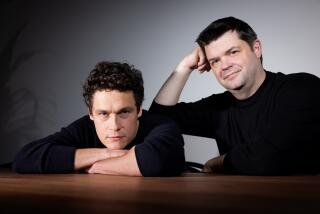‘The Amazing Spider-Man 2:’ Six things to know
By now you either know a lot about “The Amazing Spider-Man2,” have seen “The Amazing Spider-Man 2” or are one of the few who don’t care much about “The Amazing Spider-Man 2” in the first place. Still, there are some tidbits, both about the film and about how director Marc Webb made it, that are worth sharing. Here, then, are six things to know as you head in or out of the theater this weekend. (Warning: Spoilers ahead.)
Amazingly big. No summer movie is a small production, but “ASM2” was particularly not small. The film, which is the first of the five ”Spider-Man” movies to shoot for any length of time in Peter Parker’s New York, went for elaborate locations and exteriors. The Andrew Garfield film — budgeted at as much as $250 million — used a landmark bridge in several key scenes, employed 11,00 extras and even built a giant replica of Times Square (that it then proceeded to blow up, natch). Some movies use big effects created on a small screen. Others use big effects created in giant spaces (and on small screens).
No way, MJ. Shailene Woodley shot a few days of scenes as Peter Parker love interest Mary Jane Watson. But she ended up on the cutting-room floor, as the film keeps the interest fixed firmly on Emma Stone’s Gwen Stacy. Filmmakers say the Woodley material just didn’t fit with the Gwen arc. Some fans will no doubt be disappointed they won’t get a tease of MJ-ish things to come, but in a time when superhero movies seem as much about promoting sequels with the introduction of new characters as they are about focusing on the task at hand, it was nice to see MJ left for an MJ film. (More on this subject in a future post.)
All about chemistry. Speaking of love interests, the chemistry between Garfield and Stone is one of the movie’s big selling points, perhaps fueled by the real-life couple’s romance (Did that help in their performance? Webb, wryly: “I don‘t know because I don’t participate in that part of their life.”) But it’s not just chemistry; it’s also the yearning, since Garfield’s Parker spends much of the movie trying to get Stone’s Stacy to stay with him, a refreshing flourish and an underrated aspect of their onscreen pairing.
The kids are all right. Webb said he wanted this movie to be as much for kids as adults, and indeed the premiere screening was chockablock with them. A child also is the surprising dramatic linchpin in a key climactic scene at the film. The move rubbed some critics as forced and sentimental — and it could be a little jolting at first — but in a genre that’s usually about the costumed and the special-powered withstanding increasingly lethal onslaughts, it’s nice to get a sense of jeopardy from someone who’s actually vulnerable.
The villains shall lead them. Pretty much since the beginning of production, one of the notable aspects of this “Spider-Man” is the sheer number of villains. And indeed, there are plenty — Rhino, Electro and Green Goblin, not to mention some other nefarious interests. In part this is because, as a second film, the movie must expand from the first and also set things up for a third. But some of it is also misleading: Goblin isn’t Goblin for much of the film, just Harry Osborn. Rhino isn’t actually in much of the film; his purpose here is almost completely of the foreshadowing variety. This is Electro’s movie.
And a good thing too. The villain who begins life as the nebbishy, electricity-minded Max may not have the most original back story — misunderstood guy turns to evil because society forced him into it — but the idea of a character whose power involves electrifying anything in sight makes for some sharp visual set pieces (and a few jokes too). It sure beats a lizard, who just kind of globs around with little, well, electricity.
Outside the box. After all the hair-raising drops, swings and chases, there is, as this is Marc Webb’s Spider-Man, an oasis of quiet emotion. Specifically, in a scene involving Sally Fields’ Aunt May, who in a semi-monologue to Parker, uses a packing box as a metaphor for loss. It’s rare to see a scene in a superhero movie in which a character discusses mortality, at least this thoughtfully, but Webb fought to include it over some studio skepticism. As producer Avi Arad said, “I think this is the best scene in all of the Spider-Man movies, Because we’ve all been there.”
ALSO:
Echoes of Peter Parker in Spider-Man director Marc Webb
‘Grace of Monaco’ writer says he sees both side of the debate
‘Teenage Mutant Ninja Turtles’ trailer: Turtles get their close-upsFollow me on Twitter at https://twitter.com/ZeitchikLAT
More to Read
Only good movies
Get the Indie Focus newsletter, Mark Olsen's weekly guide to the world of cinema.
You may occasionally receive promotional content from the Los Angeles Times.







